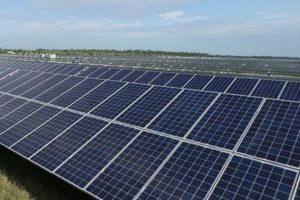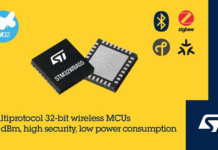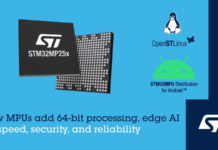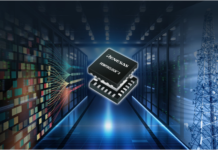
The Trump administration has made trade policy reform and enforcement of existing trade laws a priority in its strategy to bring manufacturing jobs back to America. Economists are divided in their judgement as to how much impact policies can have, given the fact that many manufacturing job losses are driven by substantial differences in factor costs, like low wages in China.
Financial simulations of solar photovoltaic (PV) factories show direct labor costs represent only 7 percent of total manufacturing costs. If a company in another country pays 50-percent less in wages than its U.S. counterpart, it only saves 3.5 percent on costs — equivalent to reducing corporate taxes from 35 percent to 15 percent. Wage or tax differences alone are not enough to bolster the industry, however.
Commerce Secretary Wilbur Ross has taken a nuanced view that recognizes the different needs of various industries and individual firms. Secretary Ross can apply that nuanced view to raise the level of government protection for the PV industry to that of the semiconductor industry.
The U.S. semiconductor industry faced intense competition from state-sponsored industries in Europe, Japan, South Korea, Taiwan, etc., but successfully weathered the storm. Today, it maintains control over the most profitable segments of the industry, while ceding market share in commodity products, like computer memories.
The PV industry is a different story. As recently as 1995, U.S. manufacturers held 43 percent of global market share and led the world in research and development. Since then, China’s influence in the PV market has increased substantially. Its PV market share went from 1 percent in 2000 to over 70 percent today.
The Chinese government contributed at least $47 billion in PV manufacturing subsidies alone, plus additional local government subsidies, loans, tax credits, and feed-in-tariffs to produce a world class Chinese industry. Meanwhile, similar scale Chinese efforts to “buy in” to the semiconductor industry ended in failure.
How did the differences in treatment of the two industries come to exist?
Beginning with Jack Kilby of Texas Instruments — who invented and patented the integrated circuit (IC) in 1958 — the semiconductor industry limited competition with a thick barrier of licenses based on defensible intellectual property (IP) rights.
This created a virtuous cycle where IP protection curbed competition, enabled good profit margins that funded research and development investments, which created new innovations with more IP leading to new high-margin products — the way it should be.
American firms had access to an IP regime that evolved and changed as needed to support the industry, ensuring a good tradeoff between rewarding inventors with a temporary monopoly and encouraging diffusion of inventions. Congress has supported industries with legislation like the Semiconductor Protection Act (1984) to promote innovation and ensure fair competition.
The PV industry, conversely, had little defensible intellectual property when the industry took off in the 2000s. In the permissive environment of China, where IP protection and fair competition laws are weak or non-existent, it enabled numerous entrants to get into the business, expand capacity beyond market demand and collapse prices.
From 2008 onward, PV prices fell by more than 80 percent as numerous competitors, backed by their local Chinese governments, one-upped each other with subsidies in a way only non-market economies can. Subsidies are concealed and hidden (with cut-rate polysilicon, electricity, non-market loans, or facilities) that frustrated anti-dumping investigations in Organization of Economic Cooperation and Development (OECD) markets.
Ultimately, Chinese competition bankrupted most unsubsidized competitors in the OECD. Low-to-negative profits, in turn, impair the Chinese PV industry’s ability to invest organically in research and development without government handouts. This has turned the business into a commodity, low-margin business. American PV manufacturers were not adequately supported by the U.S. government to prevent this outcome.
The U.S. semiconductor industry historically benefitted from an activist government that went to extraordinary lengths, until the 1990s, to ensure that U.S. firms were not unfairly kept out of foreign markets. The U.S. government ensured American firms were not subject to onerous business conditions, like compulsory technology transfer, or rampant theft of their intellectual property.
Japan was forced to open its markets and compete fairly by negotiated pacts like the US-Japan Semiconductor Trade Agreement in 1986. Japan refused to recognize U.S. IP until compelled to do so after 30 years. Texas Instruments received their Japanese patent on ICs in 1989 for an invention that occurred in 1958.
Taiwan, the pirate capital of Asia, was forced to clean up its act or be subject to Super 301 sanctions. Eventually, it paid for U.S. IP as well. Contrast that history with the relative indifference shown by the past few U.S. administrations to the plight of the U.S. PV industry due to unfair competition from China.
Moreover, existing trade rules that predate the Kyoto Protocol make no allowance or distinction for the high levels of Greenhouse gases and other emissions from Chinese PV production.
Restoring U.S. manufacturing competitiveness in PV is difficult without an activist government. Enforcing existing trade laws is not enough without a coordinated effort by OECD members to contain non-market systems in China.
Such measures must be undertaken in the context of a holistic view of the business issues unique to each industry and/or firm; as Secretary Ross suggested.
Danny Lam, Ph.D., is a research associate at Waterloo Institute for Sustainable Energy (WISE) at the University of Waterloo, Canada. David Jimenez is president and CEO of Wright Williams & Kelly, Inc., the largest privately-held operational cost management software and consulting services company.
Source: http://thehill.com

















